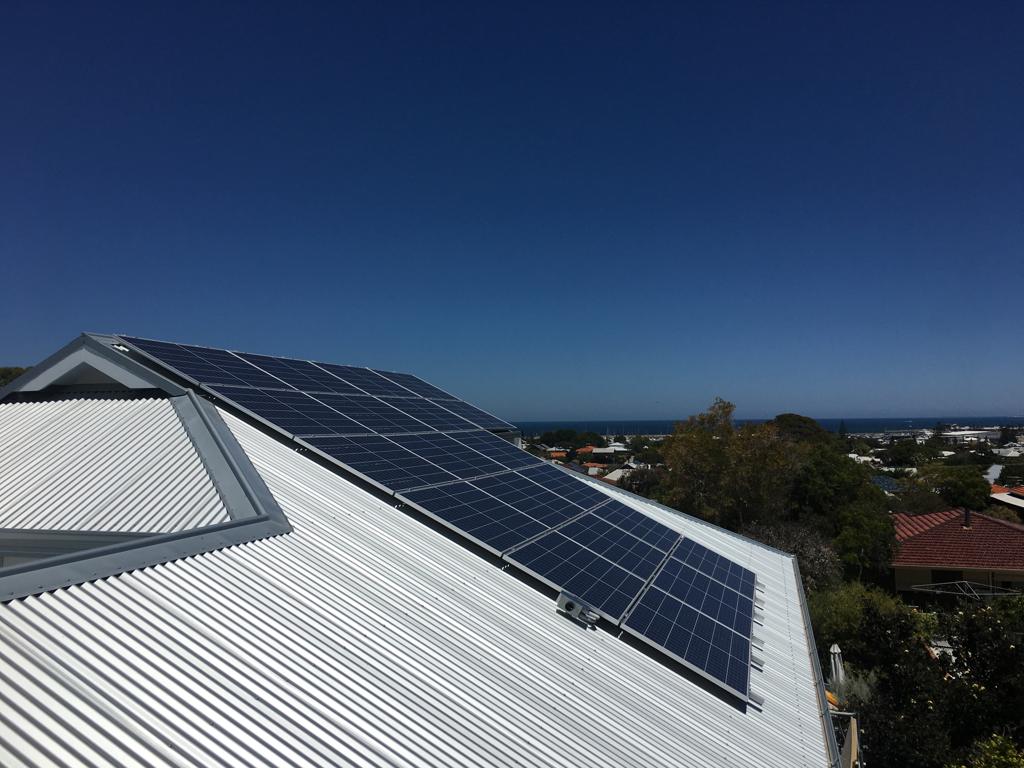The three-bedroom house designed by Terrace is in Mirvac’s Iluma Private Estate, Bennett Springs. It is net-zero, fitted with a 5 kW Jinko solar system and 9.8 kWh LG Chem battery alongside other energy and water saving designs and appliances. The house is believed to have achieved the highest NatHERs energy efficiency rating in the state, coming in at 9.1 from a score of 10.
The Purcell family moved into the home on Monday, officially commencing the experiment in which their energy and water usage as well as their spending will be monitored for the next 12 months.
Taking a broad view, the experiment will also look at the house’s impacts on the family’s lifestyle, as well as the effects of automisation, other technologies and landscaping. The findings will go on to inform the delivery of future large scale net-zero housing design concepts, hopefully offering valuable insights into both cost-efficiency and liveability.
The Purcell family could save between about $1300 and $1600 per year on their power bill as a result of the design, just how much is rather the point of the experiment. Notably, the associated cost of making the house sustainable and energy efficient was relatively low, only pushing the house-and-land-package price tag from $367,000 to $415,000.
While WA-based solar retailer Infinite Energy praised the sustainable concept behind the project, the company’s marketing manager Christie Sutton was skeptical about if the experiment would spark any real additional interest for solar PV.
“Whilst we applaud the innovative nature of this experiment, a wider roll-out is more likely to drive broad awareness of the options families have to gain cost savings by living in an energy efficient home through the use of rooftop solar and batteries,” Sutton told pv magazine Australia.
“Even though we applaud initiatives like this, we are continually frustrated by the regulatory constraints in the WA market. In our opinion, full retail contestability with a view to designing innovative tariffs that incentivise the uptake of solar and batteries would go much further to benefit both consumers and us as a solar retailer,” she added.
Unlike other states, Western Australia operates under the Wholesale Electricity Market (WEM), which means electricity prices are regulated by the government for households and small businesses located in the Southwest Interconnected System (SWIS). Synergy, the government-owned electricity retailer, is the only electricity retailer for these customers.
In 2006, the West Australian energy market was deregulated to allow competition within the market, but the option to switch energy providers is still only available to contestable customers – those who consume over 50 MWh of electricity a year.
Nevertheless, interest in sustainable housing is growing. Just last week, the Australian Renewable Energy Agency chipped in $700,000 to help Frasers Property Australia build 51 energy efficient homes complete with a solar embedded network in Sydney’s south-west. The project is hoped to demonstrate that energy efficient and even zero energy demand homes can be built at scale.
This content is protected by copyright and may not be reused. If you want to cooperate with us and would like to reuse some of our content, please contact: editors@pv-magazine.com.









By submitting this form you agree to pv magazine using your data for the purposes of publishing your comment.
Your personal data will only be disclosed or otherwise transmitted to third parties for the purposes of spam filtering or if this is necessary for technical maintenance of the website. Any other transfer to third parties will not take place unless this is justified on the basis of applicable data protection regulations or if pv magazine is legally obliged to do so.
You may revoke this consent at any time with effect for the future, in which case your personal data will be deleted immediately. Otherwise, your data will be deleted if pv magazine has processed your request or the purpose of data storage is fulfilled.
Further information on data privacy can be found in our Data Protection Policy.